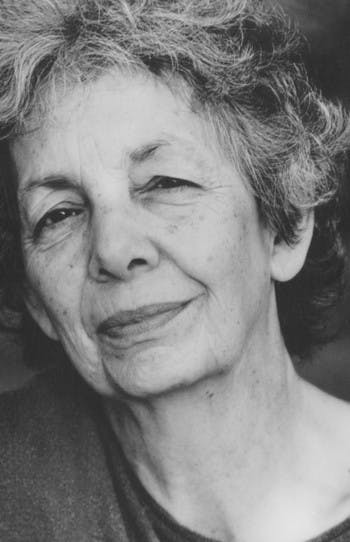Jury Citation
“Janet is one of the most popular and beloved childrens’ authors in Canada. She was born in Dallas, Texas, in 1928, moved to rural Vermont when she was 6 months old, and to New York City when she was ten. She began her Writing Life very early: she says she was making up stories before she could read; and her first job was in a local library in Rye, New York. In 1946 she came to Canada to attend Queen’s University, in Kingston, where she met and later married fellow student Richard Lunn, and became a Canadian citizen in 1963.
Her first novel, Double Spell — the story of children who find an antique doll that becomes their link to a mysterious past, which could teach Steven King a thing or two about scary dolls — was published in 1968. Shortly thereafter she and Dick moved to Prince Edward County, which became the setting for her next three novels: The Root Cellar (1983), Shadow in Hawthorn Bay (1988), and The Hollow Tree, which won her the Governor-General’s Award in 1998. After Dick’s death in 1987, Janet sold the house in the County and moved to Ottawa in 1999.
Most of Janet’s writing has had to do with history. The Root Cellar is actually a time-travel machine that, Narnia-like, takes two intrepid Canadian adolescents back in time to the American Civil War; in Shadow in Hawthorn Bay, Mary Urquart travels from Scotland in 1815 to join her brother in Upper Canada; and The Hollow Tree deals with the American Revolution. She has also written five books of nonfiction, all of them about history: a history of Prince Edward County, in 1967; a collection of stories about Canadian women, called Larger Than Life, in 1979; The Story of Canada, which she co-authored with Christopher Moore in 2001 (‘We’re still friends,’ she says), and biographies of Laura Secord and Lucy Maud Montgomery.
As well she has written what she calls Picture Books for younger readers — Amos’s Sweater, Duck Cakes for Sale, The Umbrella Party, Come to the Fair, and The Twelve Dancing Princesses — and Charlotte, the true story of Charlotte Haines, who lived 200 years ago, was published in 1998.
Janet has been active on the board of the Canadian Childrens’ Book Centre, is a founding (and life) member of the Writers’ Union of Canada, holds an honorary doctorate from Queen’s University, and has been awarded the Order of Ontario as well as the Order of Canada.
She is a beautiful writer and a meticulous researcher. She knows better than anyone that a work is never really finished, only abandoned: one of her favourite stories is of the French artist Édouard Vuillard, who in his later years would take a friend to the Louvre and, while the friend distracted the guards, would whip out his paint box and touch up his own paintings that had been hanging there for years. She writes the kind of stories she has always liked to read, she says, and that reflect her own feelings about people: ‘how we are and, sometimes, how we might better be.’ She also says that ‘I have lived through the flowering of literature and the arts in Canada, and I think I have been here in the best time Canada has ever had.’”
Janet Lunn has played a vital, leading role in that flowering, especially of Canadian childrens’ writing, and so I am especially pleased to be presenting her with this year’s Matt Cohen Award.
— 2004 Matt Cohen Award Committee (Patsy Aldana, Graeme Gibson, and Wayne Grady)
